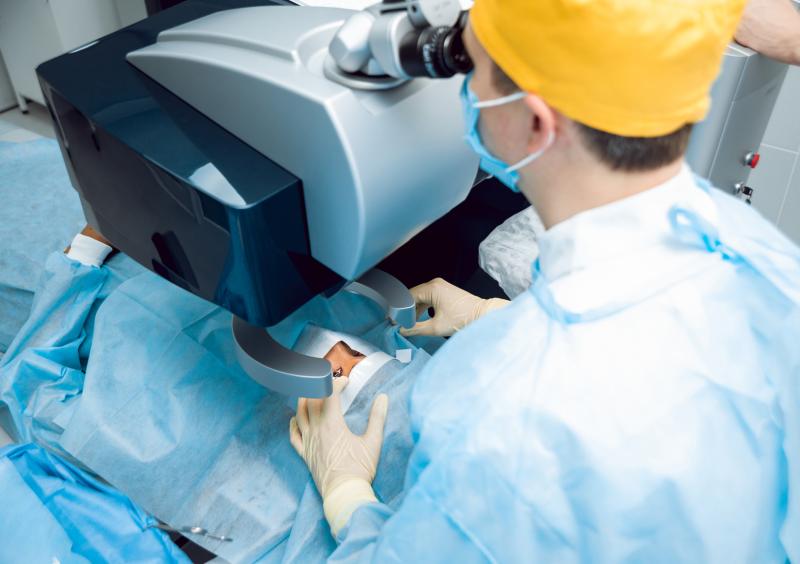Cataract surgery bears increased hazard of retinopathy among diabetics





Individuals with diabetes who underwent cataract surgery are at greater risk of developing diabetic retinopathy (DR), according to a Singapore study.
“These findings suggest that patients with diabetes may benefit from more frequent diabetic retinopathy screenings after cataract surgery,” the authors said.
Cataracts and DR are the leading causes of acquired blindness globally. This is further compounded by the fact that diabetes contributes to an increased risk of developing cataracts, so many patients with diabetes concomitantly have both eye diseases. [Lancet Glob Health 2017;5:e1221-e1234; Lancet 2017;390:600-612; Am J Ophthalmol 1995;119:295-300]
The authors assessed the risk of developing DR following cataract extraction in 1,734 eyes from 972 patients with diabetes (Malay, n=392; Indian, n=580; mean age, 58.7 years; 50.9 percent male) participating in the Singapore Epidemiology of Eye Diseases Study.
A total of 163 study eyes had already undergone cataract surgery at baseline, and 187 originally phakic eyes went through the same procedure at any time over a mean follow-up of 6.3 years.
DR occurred in 77 (22.0 percent) eyes that underwent cataract extraction and in 195 (14.1 percent) eyes that did not have the surgery. Participants who did vs did not develop DR were mostly male (58.4 percent vs 49.0 percent; p=0.02), had higher HbA1c (mean, 8.7 percent vs 7.4 percent; p<0.001) and diastolic blood pressure (mean, 80.4 vs 78.3 mm Hg; p=0.008), a longer diabetes duration (mean, 6.6 vs 5.2 years; p=0.01), and a lower body mass index (mean, 26.4 vs 28.1 kg/m2; p<0.001). [JAMA Netw Open 2020;3:e208035]
In a multivariable Poisson regression model, any prior cataract surgery was associated with a heightened risk of incident DR (relative risk [RR], 1.70, 95 percent confidence interval [CI], 1.26–2.30; p=0.001). The risk increase was consistent in both Malay (RR, 1.73, 95 percent CI, 1.13–2.69; p=0.02) and Indian (RR, 1.93, 95 percent CI, 1.33–2.80; p<0.001) ethnicity groups.
The authors, however, noted that the association with cataract removal was observed mainly in incident cases of mild or moderate DR, hence requiring further validation. Nevertheless, the present findings are consistent with a case-control study from Taiwan, which reported that cataract surgery heightens the risk of DR development, with the risk increase persisting 5 years after the procedure. [PLoS One 2018;13:e0202347]
“It was postulated that cataract extraction may possibly lead to a breakdown of the blood-retinal barrier and the blood-aqueous barrier and enhanced intraocular inflammatory response, all of which may result in the occurrence of DR in patients with diabetes,” the authors said. [Arch Ophthalmol 2000;118:912-917; Eye 2004;18:900-904]
“For [that] reason, current DR care guidelines also recommend measures of preoperative stabilization for patients with diabetes and existing vision-threatening DR who undergo cataract extraction. These measures include optimizing glycaemic control and performing panretinal photocoagulation preoperatively to better prevent postsurgery complications, such as neovascularization and vitreous haemorrhage, among this group of patients,” they added. [http://www.icoph.org/downloads/ICOGuidelinesforDiabeticEyeCare.pdf]